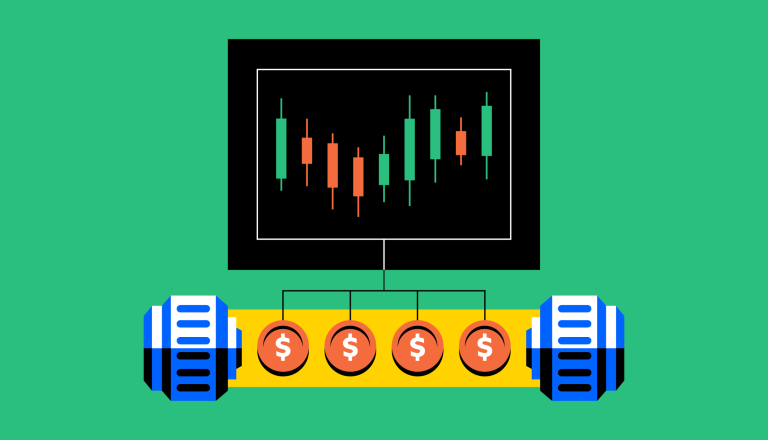What is the Lightning Network?
A beginner’s guide to the “layer 2” technology that’s making bitcoin payments faster and cheaper

Definition
The Lightning Network allows users to send or receive Bitcoin quickly and cheaply by moving transactions off of the main blockchain — you can think of it as being a little like an HOV lane on a highway.
The Lightning Network is designed to make bitcoin transactions as fast and cheap as possible. It’s part of a newer class of crypto technologies known as “layer 2” blockchains — which you can think of as being a little like HOV lanes on highways. By offloading some transaction “traffic” to the Lightning Network’s “layer 2” blockchain, the core Bitcoin blockchain (“layer 1”) can move faster.
What are some of the Lightning Network’s use cases?
Twitter permet aux utilisateurs(trices) d'envoyer et de recevoir des « pourboires » en bitcoins via le Lightning Network. Grâce à Strike, une application de paiement compatible avec ce réseau, la majeure partie des 360 millions d'utilisateurs(trices) actifs(ves) mensuel(le)s de Twitter peuvent envoyer des paiements en bitcoins vers d'autres comptes Twitter instantanément et gratuitement. À noter que Twitter n'est pas réellement la première plateforme sociale axée sur les créateurs(trices) à intégrer le Lightning Network, Substack autorise les paiements en BTC depuis la fin du mois d'août.
Le Salvador est devenu le premier pays à donner cours légal au bitcoin, en partie parce qu'il souhaite faire économiser aux Salvadorien(ne)s quelque 400 millions de dollars par an de frais de transfert. Chivo, nom du portefeuille créé par le gouvernement, est compatible avec le réseau Lightning et permet l'envoi de fonds transfrontaliers en toute transparence. Depuis le mois d'octobre, Chivo demeure l'une des applications les plus téléchargées au Salvador.
Paxful, une plateforme d'échange de pair à pair (P2P), qui traite des millions de dollars de transactions en BTC sur les marchés émergents et affirme avoir 1,5 million d'utilisateurs(trices) rien qu'en Afrique, a également annoncé récemment qu'elle autoriserait les paiements via ce réseau. Cette intégration pourrait permettre à des millions d'utilisateurs(trices) de bénéficier de paiements rapides et abordables.
Why is something like the Lightning Network necessary?
When Satoshi Nakamoto first described Bitcoin in a 2008 whitepaper, the pseudonymous creator used the phrase “peer-to-peer electronic cash” — proposing that the cryptocurrency might one day become a popular way for people to pay for goods and services online.
But as Bitcoin’s value has grown over the years, the narrative has shifted. We now tend to think of Bitcoin as being more like “digital gold” — or as an inflation-resistant way to store wealth over time.
Why did that happen? In part it’s because of the way the Bitcoin network is designed. Bitcoin allows two strangers anywhere to securely send or receive value without a credit card company or payment processor in the middle.
It does this using a decentralized network of computers all over the world — all of which need to achieve consensus (or agree) about the current state of Bitcoin’s digital ledger. Nakamoto’s solution to this problem was mining, which can be a time-consuming process.
The Lightning Network was invented, in part, to help Bitcoin function more like the digital cash that Nakamoto envisioned. It processes transactions “off-chain” much more quickly and cheaply than Bitcoin’s core blockchain — with fees that are typically fractions of a cent. Lightning transactions are also less energy intensive than transactions on the main blockchain.
While the main Bitcoin blockchain (layer 1) can typically handle fewer than 10 transactions per second, the Lightning Network (layer 2) can theoretically handle millions of transactions a second.
How does the Lightning Network work?
The Lightning Network uses smart contracts to establish off-blockchain payment channels between pairs of users. Once these payment channels are established, funds can be transferred between them almost instantly.
Cleverly, the network doesn’t need to create pairs between all users. For instance, if User A has a channel with User B, and User C has a channel with User B but not User A, funds can still be freely transferred between all networked parties. Lightning addresses look like typical Bitcoin addresses, and the payment process is very similar for users.
At any time, users can close their payment channels and settle their final balances on the core blockchain.
Because only the opening and closing of payment channels are recorded on the core blockchain, the entire Bitcoin network can move faster. Additionally, Lightning Network transactions can be more private than those made on the main blockchain (because layer 1 transactions all appear on a public and transparent ledger).
How can you get started with the Lightning Network?
If you want to make transactions using the Lightning Network, you’ll need to send some BTC (for instance from your Coinbase account) to a Lightning-compatible wallet. There are dozens to choose from. Popular options include both “custodial” and “non-custodial” wallets. Here’s the difference:
Custodial wallets: Options include Strike, Blue Wallet, and Wallet of Satoshi. These tend to be good for beginners, because they simplify the sending and receiving crypto by managing your private keys. If, for instance, you lose your password, you’ll be able to reset it.
Non-custodial wallets: Options include Muun, Breez, Phoenix, and Zap. These wallets are user-controlled and popular with more experienced traders — nobody but you has your private keys. If you lose or damage your wallet or forget your password, you could lose access to your funds. So make sure you learn how to back up or restore whichever wallet you choose.














